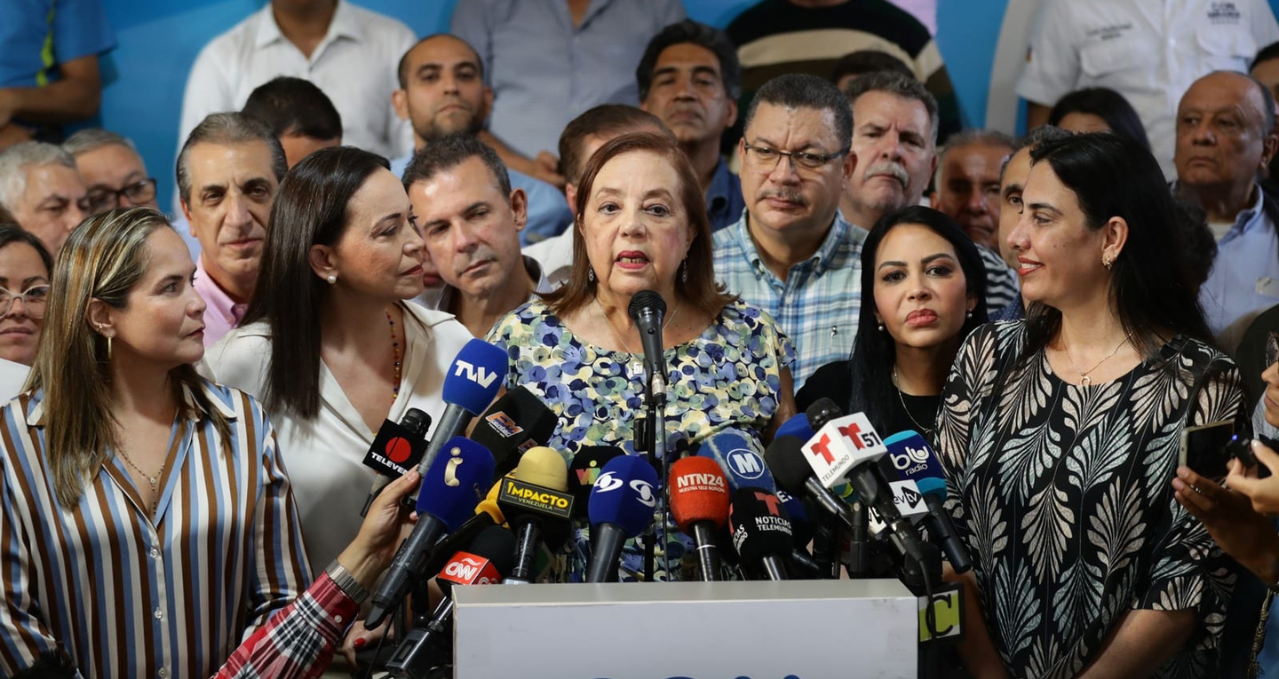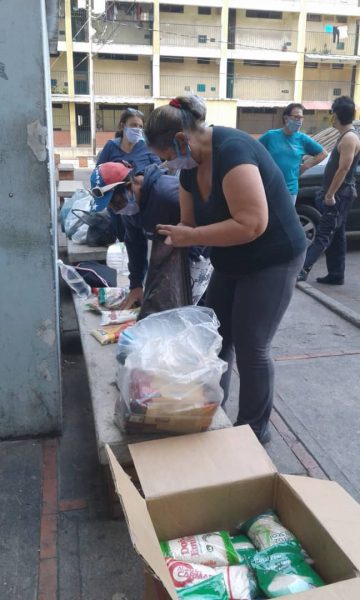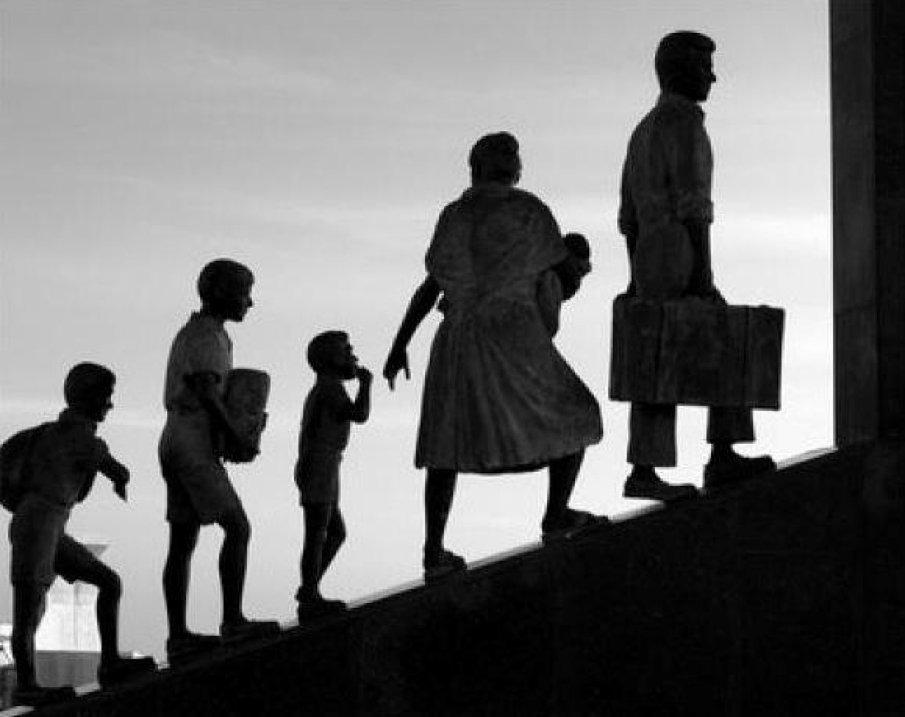The Maduro government declared a collective quarantine on all 23 states of Venezuela and the Capital District on March 17, after 33 cases of COVID-19 were officially announced in the country. Although a quarantine was a necessary measure to prevent the accelerated spread of the virus, it has been consolidated as a one-way, militarized, state policy without the participation of health workers and researchers (ecologists, biologists), and focused on a sort of massive military lockdown in which citizens’ mobility is limited, and the exercise of their political and social rights appears practically cut off. How to activate solidarity and community spirit within a dominant police state and restrictions of all kinds? The situation has been exacerbated by unequal access to goods and services, serious fuel shortages at a national level (with privileges for the military and authorized personnel), and a critically ill health system in no condition to respond to the health problem.
To some extent, social isolation has set in. Across many towns of the country, citizens have tried to stay at home, but many doubts arise regarding the south of the Orinoco River, a territory of economic dynamics that remains strategic for the support of the mafia model. In other words, does the collective quarantine decree include the Mining Arc and the entire territory south of the Orinoco and their mining activity? Taking into account the bankruptcy of Petróleos de Venezuela (PDVSA) and reduced production of oil (less than one million barrels per day), practically destined for debt payments to China, Russia, and other creditors, will the extraction of minerals, wood, and other resources be suspended south of the Orinoco? Does the early April assassination of Lieutenant Colonel Ernesto Solís of Tumeremo’s Fort Taraby, denounced by residents for Human Rights Violations since September 2019, allow us to believe that social quarantine is effective in the mining areas? Do images of the expansion of mining in Canaima National Park allow us to believe so?
As shown by facts, testimonies, and multiple investigations in the territory during the last decade, all mining activity is crossed and transversally directed by irregular, informal, violent, and criminal logic. Crime does not stop due to the COVID_19 pandemic, and hundreds of thousands are directly or indirectly engaged in these activities, potentially threatening the residents’ health with a highly contagious virus.
The reality of Venezuela regarding COVID-19 is extremely worrying because not only the quarantine system implemented so far is economically unsustainable in the medium term (people need to work to survive) but also the population around mining areas do not have the minimum capacity to respond to the arrival of the Virus. The two basic WHO tips to avoid contagion, cleanliness and social isolation, are completely blurred and difficult to observe if we take into account the following factors:
- Access to water in entire towns is quite limited, and the liquid is scarce or polluted with mercury and chemical products;
- Due to the remoteness of the mining towns and the characteristics of the economy in these areas, basic cleaning products such as soap can cost several grams of gold, discouraging their purchase by the residents.
- Sanitary conditions are extremely critical. The mining environment is inherently toxic and polluting. Local primary health centers are abandoned and all the victims of recurring events, like gunshots from armed clashes or malaria, go to faraway health centers in the mining municipalities or to the hospitals in the main cities of Ciudad Bolívar, San Félix, Puerto Ordaz, and Santa Elena de Uairen, if they have the opportunity.
- Malnutrition, anemia, and diseases that affect the immune system, such as AIDS, have been expanding alarmingly throughout southern Venezuela, mainly affecting rural, Afro-descendant, and indigenous communities.
- Thousands of miners in the camps are habituated to enter and leave the mines and move from one village to another from time to time, providing the conditions for a rapid spread of the virus. Besides, foreigners from Brazil, Colombia, and Guyana move constantly in and out the mine and across the national border
When inequality increases, the most vulnerable population seeks any type of economic activity to subsist. The mining boom of the last five years is part of this phenomenon: bankruptcy of basic companies, deterioration and indebtedness of PDVSA, economic recession, the government policy of disinvestment in the agricultural and fishing industry, increase in the price of gold, and excessive expansion of small and medium-scale mining activity. As Mariano Aguirre affirms, “COVID-19 highlights the profound inequality of the global society”, and southern Venezuela is one of the starkest examples in South American. On April 10, the first death of an indigenous person due to COVID-19 was reported in Boa Vista (Brazil), a border state with Venezuela. A 15-year-old teenager belonging to a Yanomami community lost his life to the disease.
Faced with COVID-19, the Orinoco Mining Arc model is a time bomb that can alarmingly exacerbate the complex humanitarian crisis in Venezuela. Due to the indolence and ambition that characterizes the mafias that run the mining business, they will ignore this reality and will look for ways to maintain their profits at any cost.
Germán Dam, a journalist with ten years of experience in the mining dynamics of Venezuela, published on April 7 three pictures of alleged members of criminal gangs wearing medical protective gear in the mines of Tumeremo. The images contrast with the precarious situation in the health centers of the area or the degree of exposure and vulnerability of miners and residents (indigenous and “creoles”). The harsh reality (the current and the one coming) calls for a careful, non-violent, creative, and supportive response. We need to create ecological and humanitarian coping mechanisms to support our rural, Afro-descendant, and indigenous communities, where the elderly, malnourished, and people with heart and lung diseases are the most vulnerable.
What kind of community responses can we design to address the crisis, after being abandoned by the State? How can we better feed ourselves to resist the imminent arrival of the virus? How can we organize to support the most vulnerable? What can we do about water scarcity? How can we decrease collective anxiety in contexts of conflict? How can we break with the militaristic-restrictive logic and carry out social actions focused on care and solidarity? What kind of useful technical knowledge and tools can we contribute? What should we reflect on, learn, and forget if the pandemic is “overcome”? These are some of the questions and challenges that lie ahead of us.
*Cesar Romero. Executive Director of CERLAS (Center for Reflection and Social Action). Activist of the Platform against the Orinoco Mining Arc. Metallurgical engineer. Researches mining in Venezuela and its multivariable impacts on ways of life.




